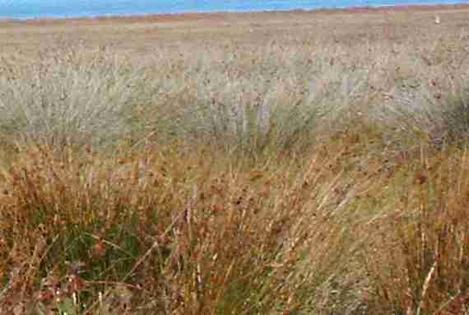California Salt Marshes
see also HabitatsAnnual precipitation:
high summer-fall humidity limited by salt, 25-35 inches(fog raises
the base of 10-15 inches of rainfall)
Common Animals
Sea Birds, Heron, Sandpipers, Killdeer, Rails
Common Plants
Sea Blite, Suaeda spp., Pickleweed, Salicornia spp., Saltbush, Atriplex spp., Frankenia salina, Salt Grass, Distichlis spicata, in the brackish areas you can find Cottonwood, Populus spp., Willow, Salix spp., Wax Myrtle, Myrica californica, Rushes, Juncus spp. and Sedges, Carex spp.
Soil and climate notes:
sodium impacted clay or silt (occasionally sand/clay), high pH
About California Salt Marshes
They keep debating as to how much of California's Coastal Salt marsh community is actually left, 5%-10% seems to be the number. It is easy to fill in, and usually located in a vary valuable area. It is also easily damaged by human activity.
The salt marshes also exist in a few inland spots like the edges of the Salton Sea and Soda Lake in Carrizo, but for the most part are in tidal flats next to the ocean. The inland areas have slightly different plants than the coastal sites, but very close.
Salt marshes are a mixture of halophytes (salt loving) plants and wetland adapted plants (where the freshwater inlet lowers the salt to the point where not-so-salt-tolerant plants can survive).So plants like Frankenia sp., Distichlis spicata., Jaumea sp., Salicornia sp., and Suaeda sp. live in the full salt areas.
Juncus spp, Myrica californica, Scirpus spp. and occasionally some Salix spp. live on the edges where the salt isn't full strength.
This is a plant community to observe, and stay out of!
Plants
A list of California native plants that grow in the Coastal Salt Marsh plant community.







